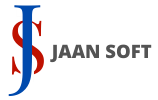In an era where technology and business strategies are intertwined, enterprise architecture (EA) has emerged as a critical discipline for organizations aiming to enhance their agility, efficiency, and alignment with business goals. This article explores the importance of enterprise architecture, and the frameworks and methodologies that modern businesses can leverage to achieve excellence.
Understanding Enterprise Architecture
Enterprise architecture is a comprehensive approach that defines the structure and operation of an organization. It encompasses the alignment of IT strategy with business goals, ensuring that technology investments support organizational objectives. By establishing https://www.flickr.com/photos/199067371@N03/ clear framework for decision-making, EA helps businesses navigate complexity and drive transformation.
The Importance of Enterprise Architecture
As organizations face rapid changes in technology and market dynamics, the need for a robust enterprise architecture becomes paramount. EA provides several benefits:
- Alignment: Ensures that IT initiatives support business objectives.
- Agility: Facilitates rapid adaptation to new market demands and technological advancements.
- Efficiency: Streamlines processes and reduces redundancy, leading to cost savings.
- Risk Management: Identifies and mitigates risks associated with technology and business operations.
By adopting a strategic approach to enterprise architecture, organizations can position themselves for long-term success.
Frameworks for Enterprise Architecture
Various frameworks exist to guide organizations in developing effective enterprise architecture. Each framework offers unique perspectives and tools tailored to different organizational needs.
The Zachman Framework
Developed by John Zachman, the Zachman Framework is one of the earliest and most widely recognized EA frameworks. It provides a structured approach to understanding the various perspectives of an enterprise, including:
- What: Data and information.
- How: Processes and functions.
- Where: Network and infrastructure.
- Who: Roles and responsibilities.
- When: Timing and events.
- Why: Motivation and goals.
This framework emphasizes the importance of viewing the enterprise from multiple angles, ensuring a holistic understanding of its operations.
The TOGAF Framework
The Open Group Architecture Framework (TOGAF) is another prominent framework that provides a comprehensive approach to EA. It is characterized by its Architecture Development Method (ADM), https://jaik-balakumar.jimdosite.com/ guides organizations through the phases of architecture development, including:
- Preliminary Phase: Establishing the architecture framework.
- Architecture Vision: Defining the vision and scope.
- Business Architecture: Aligning business strategy with architecture.
- Information Systems Architecture: Designing data and application architecture.
- Technology Architecture: Defining technology infrastructure.
- Opportunities and Solutions: Identifying implementation strategies.
- Migration Planning: Developing a roadmap for implementation.
- Implementation Governance: Ensuring compliance with architecture.
- Architecture Change Management: Adapting to changes over time.
TOGAF’s structured approach helps organizations create a cohesive architecture that aligns with their strategic goals.
The Federal Enterprise Architecture Framework (FEAF)
The FEAF is designed for federal agencies but can be adapted for any organization. It focuses on improving the efficiency and effectiveness of government operations through a unified architecture. Key components include:
- Performance Reference Model: Measures performance and effectiveness.
- Business Reference Model: Defines business functions and services.
- Service Component Reference Model: Identifies reusable service components.
- Technical Reference Model: Establishes technology standards and guidelines.
The FEAF promotes collaboration and standardization across agencies, making it a valuable resource for organizations seeking to enhance their operational capabilities.
Methodologies for Implementing Enterprise Architecture
In addition to frameworks, various methodologies can guide organizations in implementing enterprise architecture effectively.
Agile Enterprise Architecture
Agile methodologies emphasize flexibility and iterative development. In the context of EA, this approach allows organizations to adapt their architectures in response to changing business needs. Key principles include:
- Collaboration: Engaging stakeholders throughout the process.
- Incremental Development: Building architecture in small, manageable increments.
- Feedback Loops: Continuously gathering feedback to refine the architecture.
Agile EA enables organizations to remain responsive and aligned with their strategic goals.
The Agile Architecture Framework (AAF)
The AAF focuses on integrating agile practices into enterprise architecture. It emphasizes the need for architects to collaborate closely with development teams, ensuring that architectural decisions support rapid development cycles. This methodology promotes a culture of innovation and responsiveness, aligning architecture with business agility.
Conclusion: Achieving Excellence in Enterprise Architecture
Enterprise architecture is a vital discipline for modern businesses seeking to navigate complexity and drive transformation. By adopting effective frameworks and methodologies, organizations can achieve excellence in their enterprise architecture efforts.
As technology continues to evolve, the integration of enterprise architecture into business strategy will be crucial for sustained success. Embracing this discipline enables organizations to align their IT investments with business objectives, fostering agility, efficiency, and innovation in an ever-changing marketplace.
